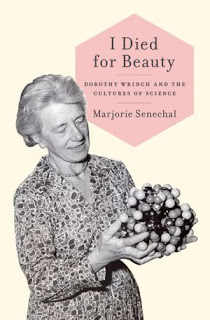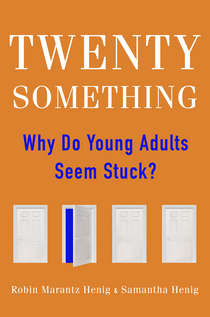-

I Died For Beauty: Dorothy Wrinch and the Cultures of Science
by Marjorie Senechal

The Nutshell:
Mathematician Dorothy Wrinch, the first woman to receive a doctor of science degree from Oxford, was a friend of Bertrand Russell, a pioneer in the study of proteins, and the respected peer of Niels Bohr, D’Arcy Thompson, and many leading scientists and thinkers. But after losing a controversial scientific feud—one that had more than a little to do with her gender—she faded from memory. Smith College mathematician Senechal, who worked with Wrinch at the end of her career, reconstructs the life of a woman in the world of science and academia in the mid-20th century.
Literary Lovechild Of:
Brenda Maddox’s Rosalind Franklin: The Dark Lady of DNA and Paul Hoffman’s The Man Who Loved Only Numbers: The Story of Paul Erdos and the Search for Mathematical Truth.
You'll Find It On Your Bookshelf If:
You once got into a shouting match over Zermelo–Fraenkel set theory.
Cocktail Party Fodder:
The first proteins (the word comes from the Greek prota, “of primary importance”) to be identified as such were cheese, egg whites, and fibrin, a blood-clotting factor.
For Optimal Benefit:
Read to console yourself before attending your next faculty meeting: academic politics used to be much worse.
Snap Judgment:
Senechal is equally comfortable writing science, math, biography, and memoir, as she weaves her experiences, work, and relationship with Wrinch into the narrative. She skillfully evokes the thrills of intellectual discovery in Europe between the wars as well as the tormented gender politics of the period after women’s suffrage and before equal rights.
-

Kids, Cops, and Confessions: Inside the Interrogation Room
by Barry C. Feld

The Nutshell:
We think we know what happens in a police interrogation, thanks to film and TV, and we assume that Miranda rights protect the people to whom they’re issued. But University of Minnesota legal scholar Feld proves both suppositions wrong in a study of juvenile interrogations and the role Miranda rights play in confessions.
Literary Lovechild Of:
Edward Humes’ No Matter How Loud I Shout: A Year in the Life of Juvenile Court and Roger W. Shuy’s The Language of Confession, Interrogation, and Deception.
You'll Find It On Your Bookshelf If:
You feel the initial interrogation scene is the perfect time to tune into a Law & Order rerun.
Cocktail Party Fodder:
Rather than plead innocence, 90 to 95 percent of criminal defendants plead guilty in return for leniency in sentencing.
For Optimal Benefit:
Read before watching the The Central Park Five, a new Ken Burns documentary about five Harlem teenagers convicted of rape (and only much later exonerated) after making false confessions.
Snap Judgment:
Feld’s argument that Miranda rights protect police officers rather than suspects is hard to disagree with, as is his suggestion that juveniles and adults might not warrant the same interrogation techniques.
-

Twentysomething: Why Do Young Adults Seem Stuck?
by Robin Marantz Henig and Samantha Henig

The Nutshell:
In order to figure out why the Millennials can’t seem to get their act together, a mother-daughter journalist team confers with social scientists, surveys twentysomethings and baby boomers, and draws on their own experiences. Their conclusion? The generation coming of age today is dealing with mostly the same problems their parents dealt with in the 1960s and 1970s.
Literary Lovechild Of:
Tom Brokaw’s Boom! Talking About the Sixties: What Happened, How It Shaped Today, Lessons for Tomorrow and (whether it’s been written yet or not) Lena Dunham’s forthcoming memoir.
You'll Find It On Your Bookshelf If:
You’d been hoping to store the book, and many other household possessions, in the room of your twentysomething with a B.A. in folklore. Except that he’s been living with you for the past three years.
Cocktail Party Fodder:
The median age for men at first marriage was 26.1 in 1890, 22.8 in 1960, and 28.7 in 2010. What’s “weird,” say the authors, isn’t the so-called slow pace of marriage today but the rush to marriage of the 1950s.
For Optimal Benefit:
Make sure to finish before season two of Girls begins on HBO, so that you’ll have an excuse to weigh in with your opinions—all the time.
Snap Judgment:
The Henigs’ writing is lively and they’re pleasingly nonjudgmental, but because (as they acknowledge) their subject is a mostly lucky swath of upper-middle-class America, their stories can be a little short on edge and weight.



